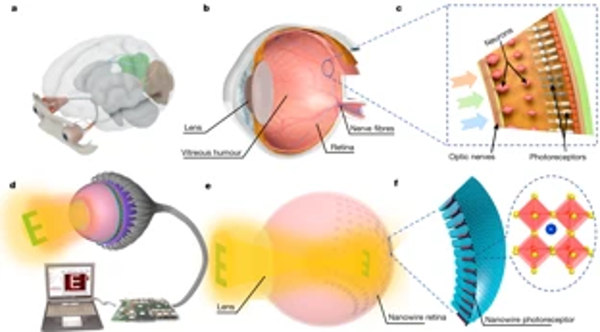A team of researchers at The Hong Kong University of Science and Technology, the University of California, Berkeley and Lawrence Berkeley National Laboratory has built an artificial eye that uses perovskite nanowires, with capabilities that come close to those of the human eye. In their paper, the group describes developing the eye and how well it compares to its human counterpart.

The artificial eye is made with an aluminum-lined tungsten shell that serves as a round casing. It has an iris and lens in front and a retina in the back. The casing is filled with an ionic liquid. The retina has a base made of aluminum oxide dotted with pores'each of which hosts a photosensor. In the back of the retina are thin flexible wires made of a eutectic gallium'indium alloy that has been sealed using soft rubber tubes. The retina is held in place by a polymeric socket that allows for electrical contact between perovskite nanowires and the liquid-metal wires at the back. The nanowires are banded together and connect to a computer that processes light information coming from the retina.